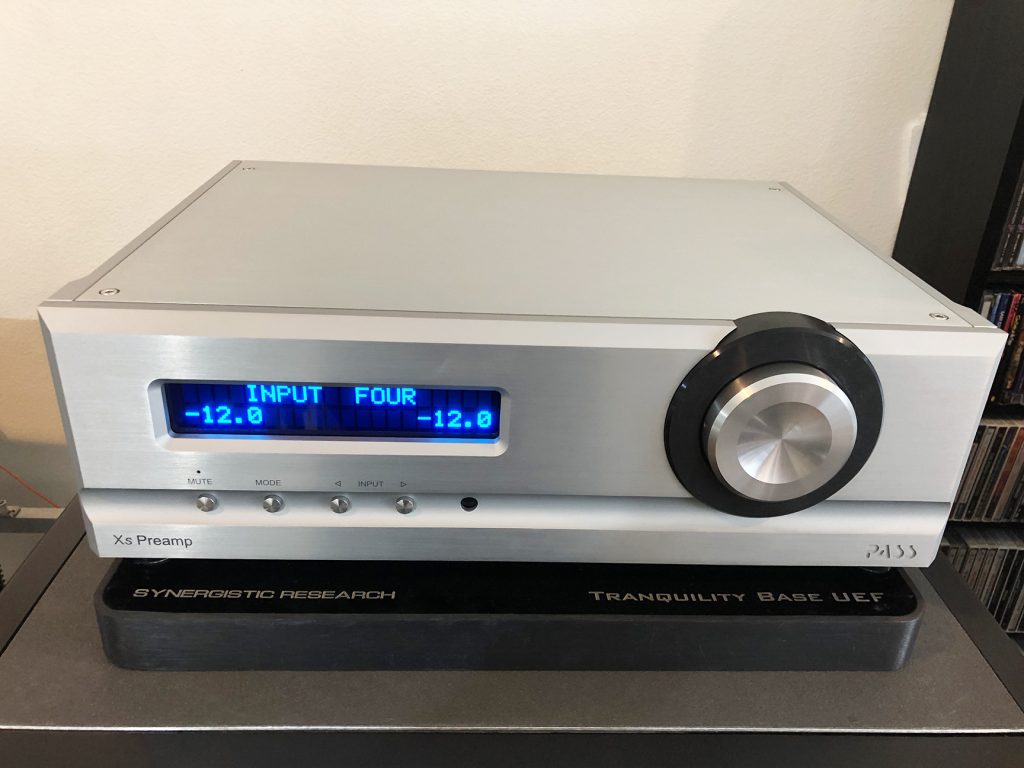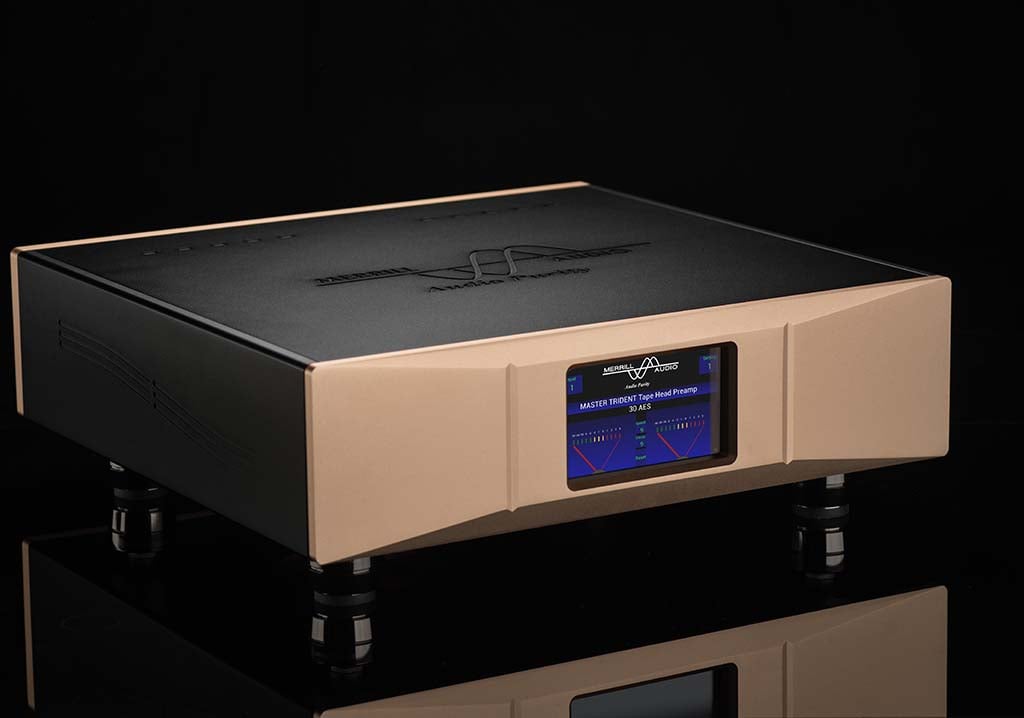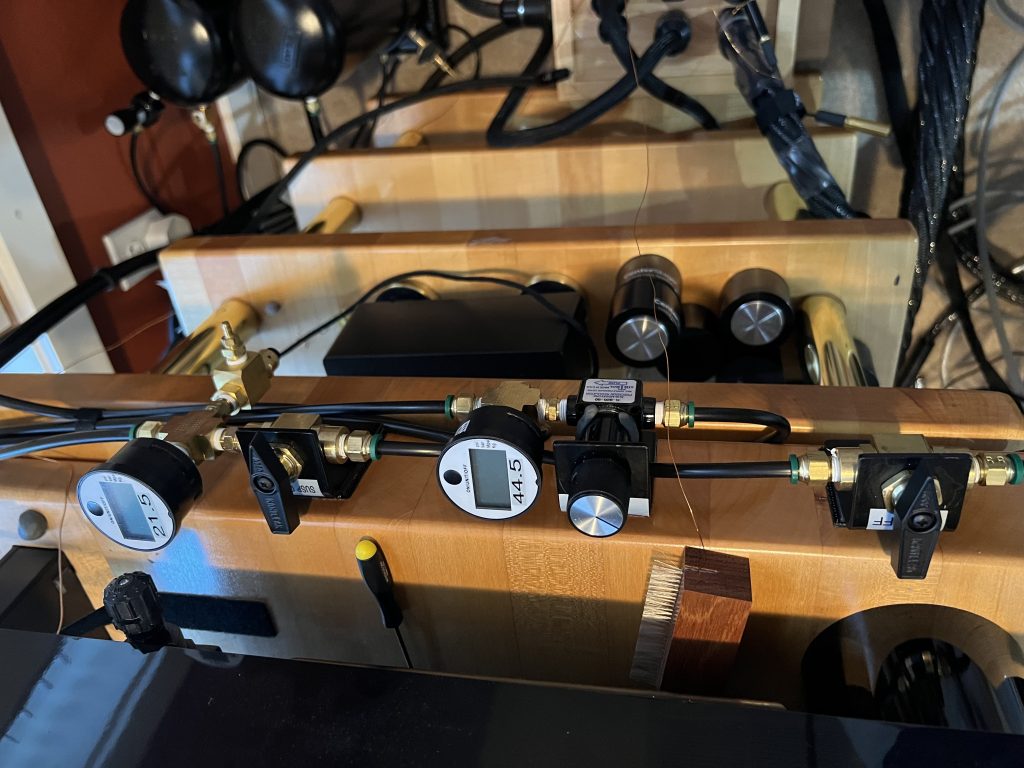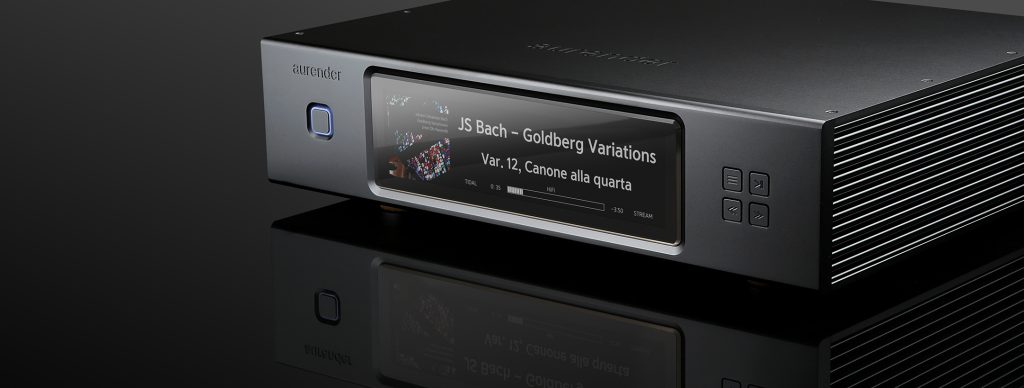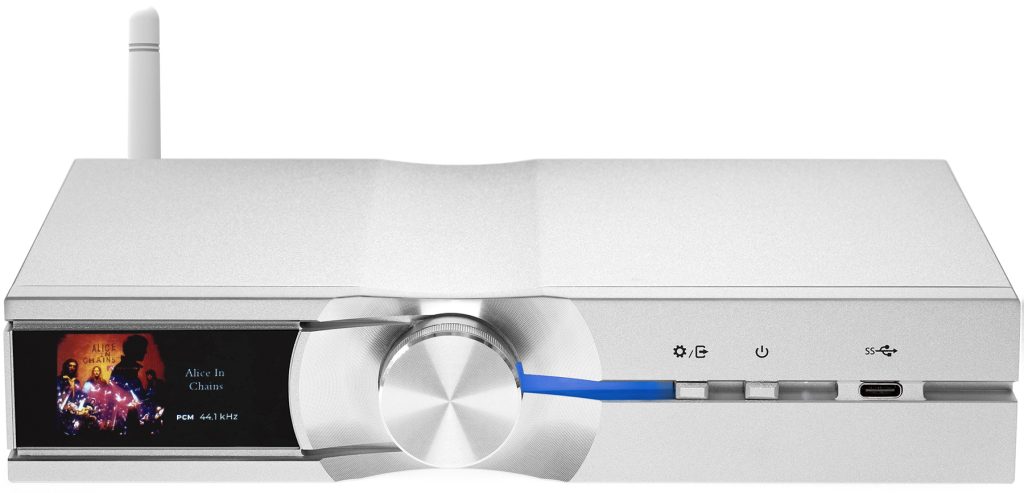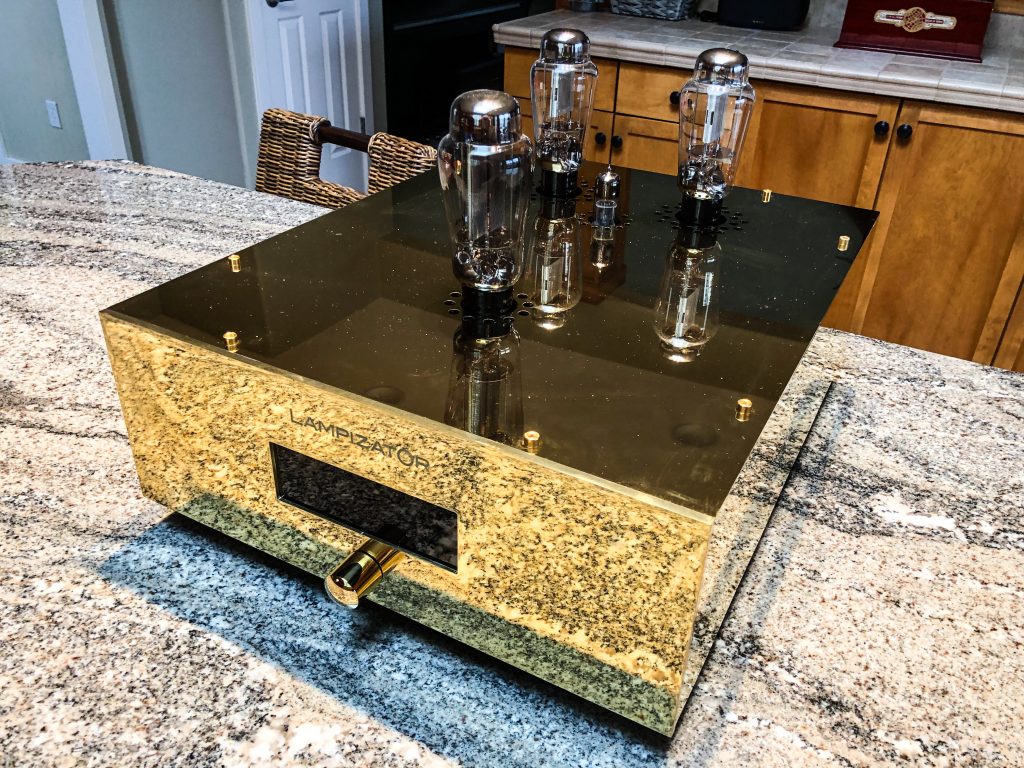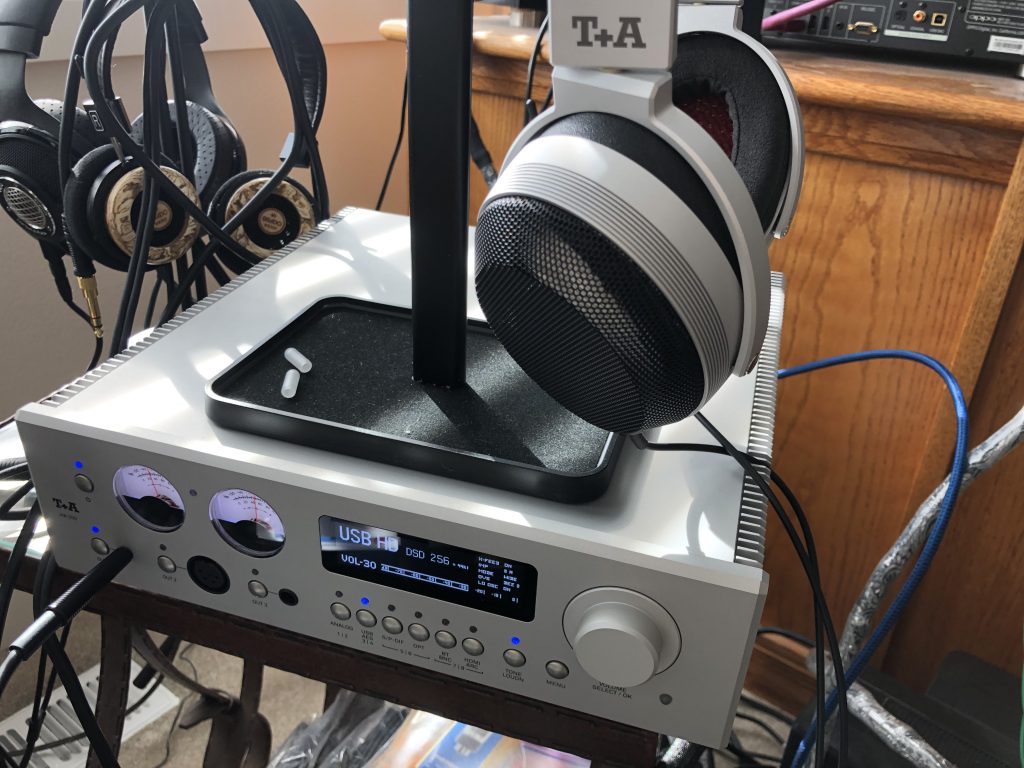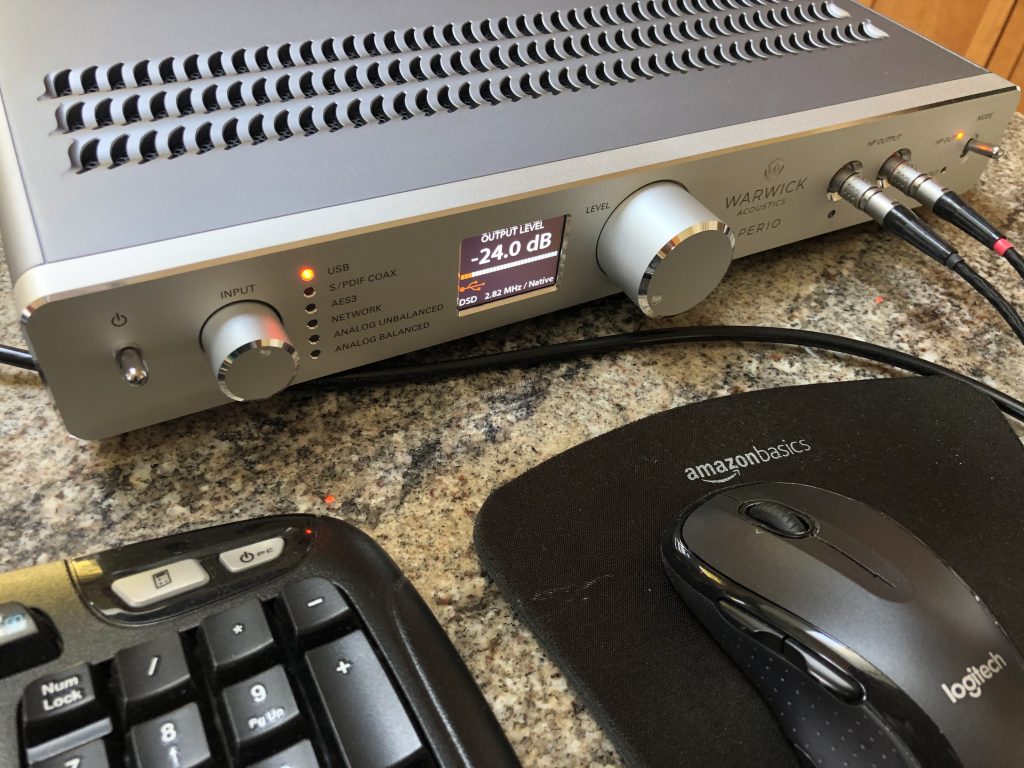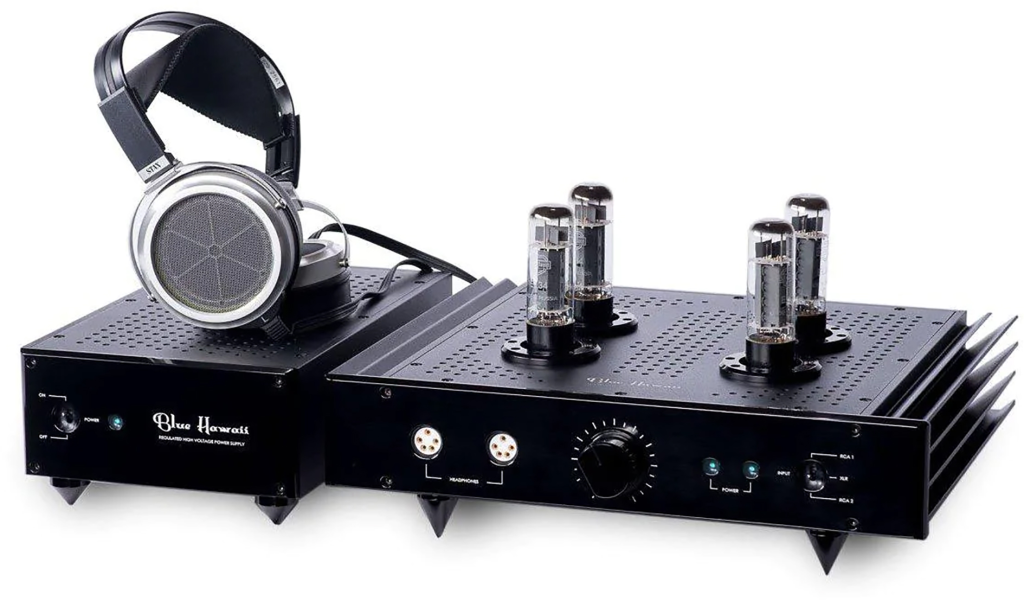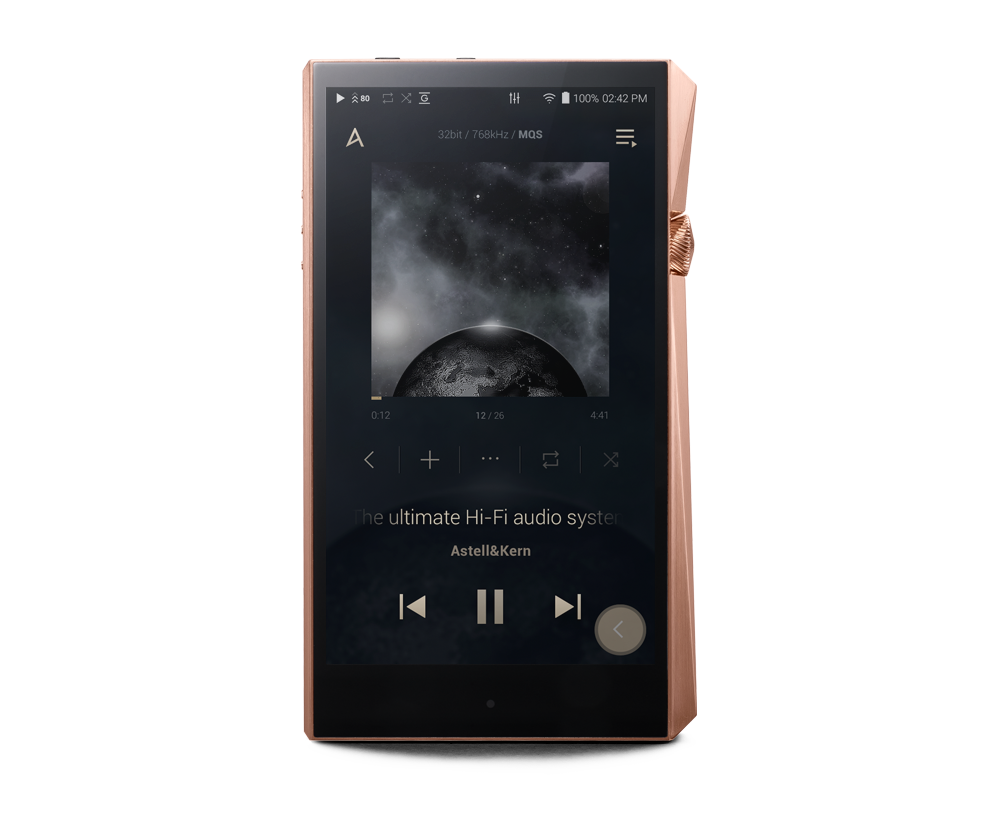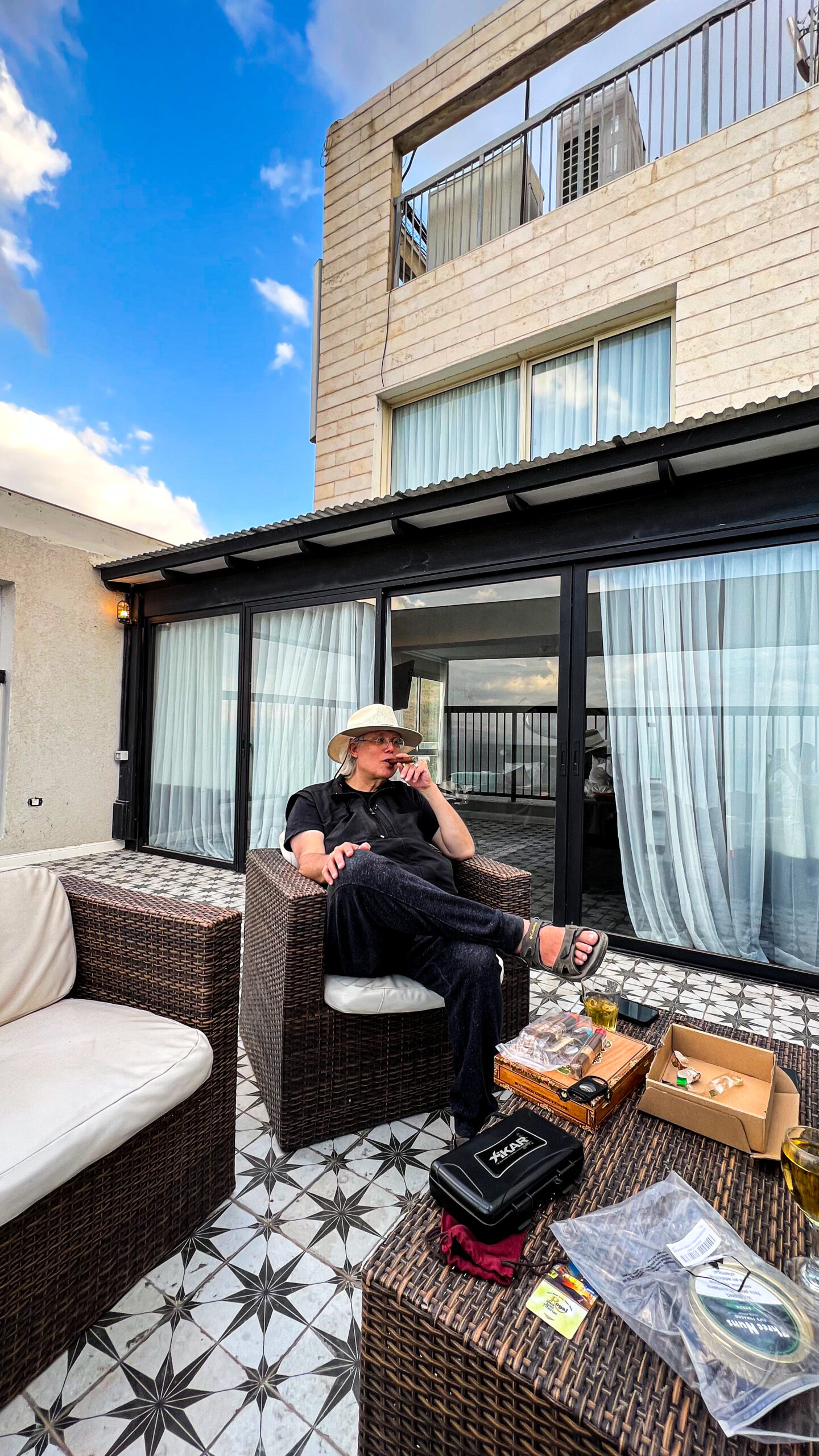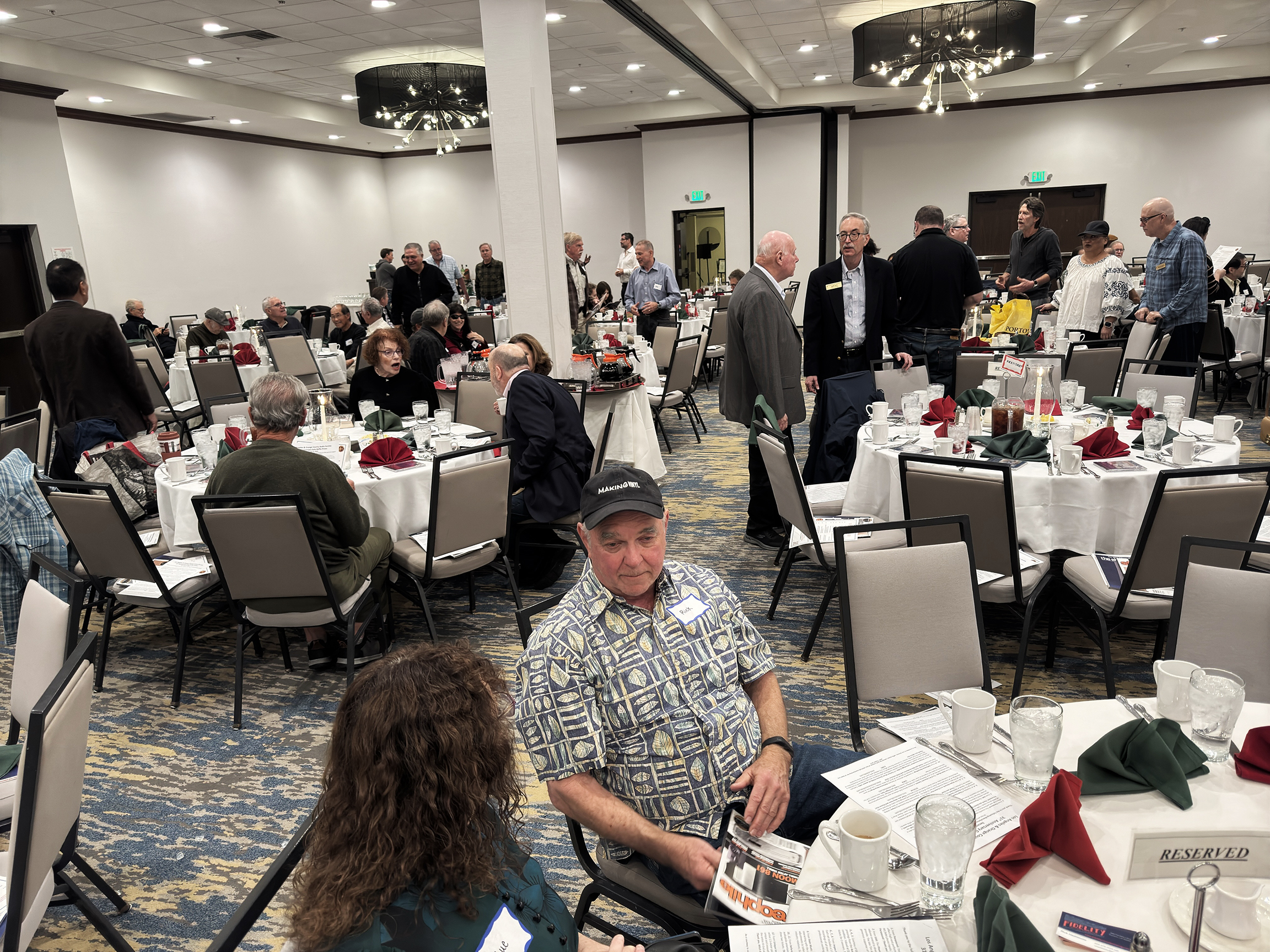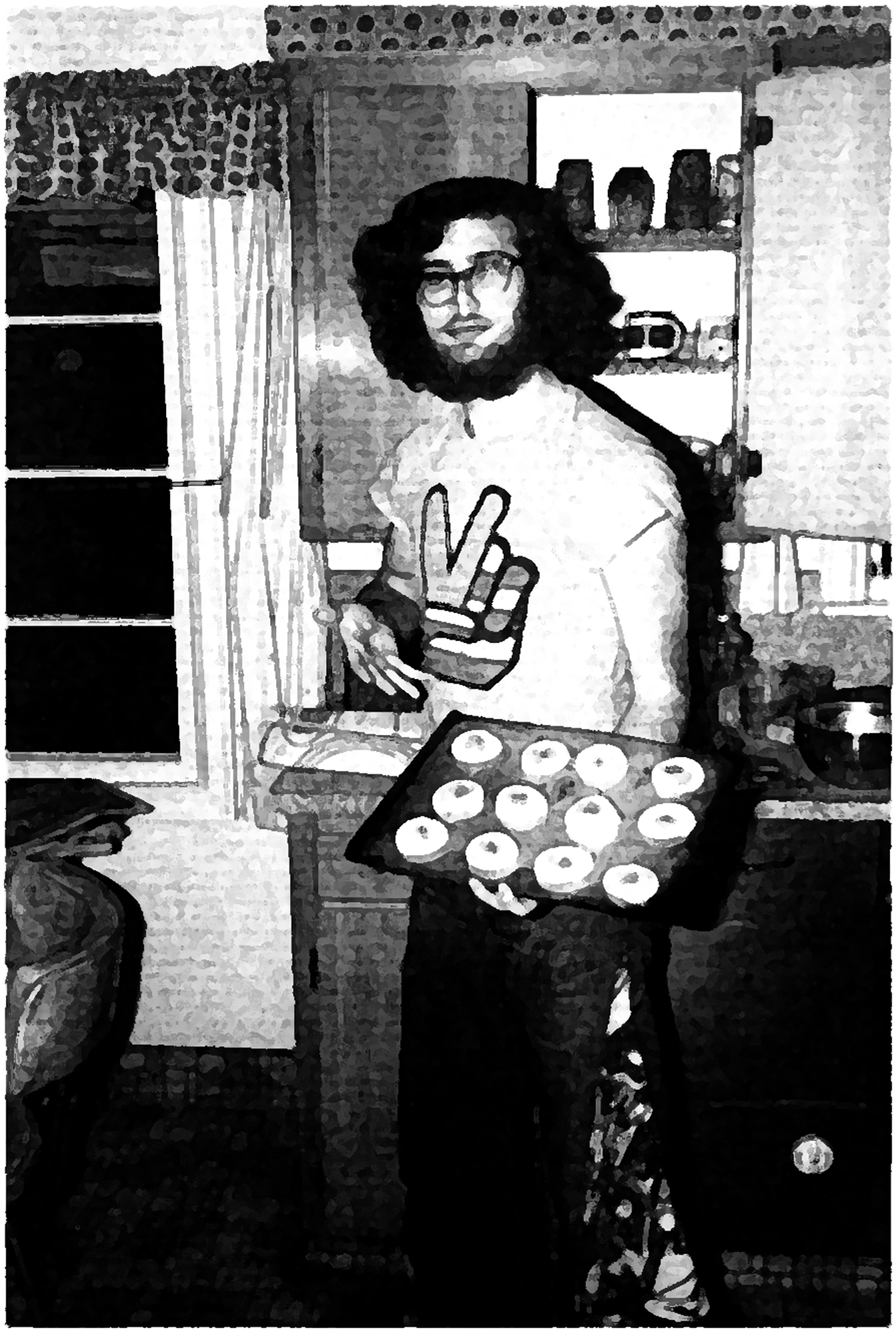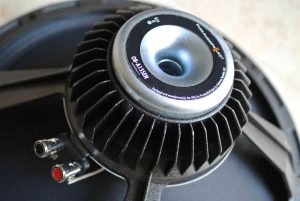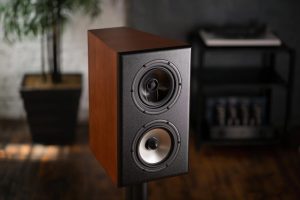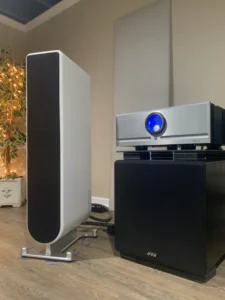
The Raidho TD 4.2 Loudspeakers, with a Stillpoints Aperture first-reflection-point panel and stand, and a two-high stack of Ryan Tinsel Rack-It LP storage units. Black and white oil painting by Dan Zimmerman. (Photograph and image processing by David W. Robinson...true of all listening room photographs in this essay.)

PF Editor-in-Chief David W. Robinson at Munich 2018, doing what he loves best; in the background is audiobud Bill Parish of GTT Audio. (Photograph by Wojtek Pacula, Editor of High Fidelity in Poland.)
This is a year heavy with exceptional loudspeakers in our reference stereo room at PF Central. Three great loudspeakers have made it here in 2020, in cavalcade. The Raidho TD 4.2, the subject of this reflection, actually arrived later in 2019, departing here in early spring. This was followed by the absolutely unique VIVID GIYA 1 S2 in the spring. Finally, we had our current loudspeakers, the Raidho TD 3.8 arrive, which are currently in place.
Quite a lot of lifting and logistics, but the results have been worth the effort and cost, I'm pleased to say.
Time to start my commentaries, and catch up on the queue.
Background to a commentary…

Benno Meldgaard, a portrait. Happy Valley, OR, 2016 (photograph and image processing by David W. Robinson)
Benno Meldgaard is a truly brilliant audio designer. Let me start there. I have heard the results of his work at both GamuT and Raidho, where he pulls double duty as the lead design engineer at both firms (which have a common corporate parent ownership). I've known him and his doings in both loudspeaker design and electronics for a number of years. He's a great guy…a helluva lot of fun with pints and shots…who is also an audiomaniac genius.
So much so that…dig this: whatever Benno touches turns to audio gold.
He and Michael Vamos have been close audiobuds of mine for a number of years now. Michael is the US distributor on the USA side of things for GamuT, and has been working with Benno to extend the awareness and sales of GamuT.

Benno Meldgaard and Michael Vamos: a portrait. LA Audio Show, 2017 (photograph and image processing by David W. Robinson)
In fact, back in Issue 92 (May/June of 2017), I published a major love letter on the extraordinary GamuT Zodiac Reference Loudspeaker, together with GamuT's top-notch preamp and monoblocks. You can read my extended reflections HERE.

Benno Meldgaard with the wondrous GamuT Zodiac reference loudspeaker in my listening room.
And so, I already knew that Benno was capable of audio wonders.
When he added Raidho to his profile, I took notice. Big time.
True confession time: Before Benno arrived at Raidho, I had generally found their designs to be somewhat on the analytical side, and not terribly appealing to me when I would stop by rooms featuring them at audio shows. I would pause, stand in the back, sit down…but I wouldn't stay. No insult to Raidho; I just didn't connect with their pre-Benno loudspeakers. Your mileage may vary.

Benno Meldgaard at Munich 2018 (photograph and image processing by David W. Robinson); check the cabinet's lovely woodwork.
BUT…then I heard the beginning of Benno's efforts to upgrade the earlier Raidho designs. The cabinets were textus receptus…no changing those at this point…but he was free to make the most of them. Which is what he did. Drivers. Internal cabling. Crossover network. All were completely re-worked, taking the pre-existing and highly gorgeous Raidho cabinets (you have to love Danish woodworking!) to new levels of performance.
I got a brief exposure to the new Raidho at the Munich Show of 2018. Benno and I talked for a brief while…the show was very busy for us both…and we agreed that he would get a review sample to me as soon as possible, when they had a review pair to spare.
Turned out, that wouldn't be until the summer of 2019.
Specifications
Before going on, here are the tech specs for the Raidho TD 4.2:
- Size WxHxD: 200 x 1550 x 600 mm (440 x 1580 x 600 mm, including feet; 7.9" W x 61" H x 23.6" D; 17.3" W, including feet)
- Weight: 65 Kg (143.3 lbs.)
- Frequency response: 25 Hz – 50 kHz
- Impendance: >6 ohm
- Sensitivity: 89 dB 2.828 V/m
- Crossover: 5 kHz; Stepped slope, phase and impulse linear
- Enclosure: Ported
- Drivers: 1 x Sealed TD Ribbon tweeter, 2 x 110 mm Tantalum-Diamond mid-range drivers, 4 x 115 mm Tantalum-Diamond bass drivers
- Finish: Black piano; all possible paint colors; walnut burl veneer
- Amplification: >20 W (though we have seen excellent results w/small tube amps)
There. Now that's done.

The Raidho TD 4.2 Loudspeaker (image courtesy of Raidho Acoustics)
A tolerably…but not intolerably…tall loudspeaker. Slender profile. Bass down to nearly 20Hz (25Hz ain't bad)…ported design…and very extended on the high frequencies, which is incredibly important in today's world of high resolution digital (especially DSD256 and DSD512) and state-of-the-art turntables and RTR machines. You want all the bassmeant and skies that you can get. A very good nominal impedance of around 6 ohms; moderate efficiency at 89dB/2.828 V/m. And that Benno crossover…always magical!
Drop-dead gorgeous woodworking that gob smacks you at first glance. The original cabinet design was by Michael Børresen. Benno then took this as a point of departure, and did what Benno does to take it to the next level.

The Raidho TD 4.2, rear view, showing the unique porting system, the wonderfully sculpted woodworking, and the cable connectors at the bottom of the cabinet (image courtesy of Raidho Acoustics)
When the 4.2's arrived, I called upon my son, St. John the Strong, to assist in squiring them into our reference stereo listening room. Raidho's crating of the TD 4.2's was very well done, being strong, quite secure internally, and wheeled for easier handling.

Inside, there were thick foam pads glued to the crate, with sculpted cutouts that the speakers laid upon quite precisely. Very intelligent. The speakers were bagged before being placed on those pads, with a special protector with warning message placed over the ribbon tweeters. You don't want to be dinging drivers, eh?

St. John the Strong and Intrepid…a helper of the first order! You can see one of the V-shaped foam inserts on the left side of the 4.2's.
Between John and I, we were able to get the TD 4.2's into place without too much effort. (That said, I am not as young as I used to be. Funny thing about that.)
The supporting audio cast

Setup of the initial system with the TD 4.2's: with the PASS Labs Xs 150 Reference Class A monoblocks (top shelves of the Critical Mass Systems rack) and power supplies (bottom shelves, being fed by Kubala-Sosna Elation! XLRs
Our first configuration was to combine the TD 4.2's with the following:

The Wave Kinetics NVS turntable with Durand Tosca tonearm, and the DS Master1 optical cartridge in action. In the background, sporting the green emitters, is the DS Audio ION-001.
Sources included the Wave Kinetics NVS reference direct-drive turntable, the Durand Tosca gimbal tonearm, outfitted with the DS Audio DS Master1 optical cartridge and dedicated EQ/Phono Amp, and then the added DS Audio ION-001 constant ionizing system for LP playback…

The DS Audio DS Master1 EQ/Phono Amp with the top removed. Gorgeous construction…and look at all of that copper!
…an absolutely smashing combination, which I reviewed quite enthusiastically back in Issue 110 (HERE). Digital sources included the Aurender A30 Music Server with 10TB of internal storage(!)/Streamer/DSD512-capable DAC/Headphone Amp/CD Ripper (my evaluation of this killer component is coming in the near future)…

The Aurender A30 in its place on our Stillpoints ESS Grid rack
…and my reference Playback Designs MPT-8 Reference SACD/CD optical drive with Stream-X streamer, together with the MPD-8 Reference DAC.

The Playback Designs MPT-8 Reference SACD/CD Transport with Stream-X streamer on its Synergistic Research Tranquility Base UEF (don't listen without it!), itself on a Stillpoints ESS Rack with Grid shelving.

Playback Designs' MPD-8 Reference DAC…splendid!
The preamp was the PASS Labs Xs Reference pre, a particular favorite of mine…always transparent and faithful to the music. From there, output flowed to the monoblock pair of PASS Labs Xs 150 pure Class A Reference Monoblock Amps, and thence via Synergistic Research SRX speaker cables to the TD 4.2s.
The second configuration replaced the PASS Labs Xs 150 system with the Audionet MAX monoblocks, another top-notch tried-and-true reference for me here. Instead of the Kubala-Sosna Elation! XLRs, I went with the superb Synergistic Research SRX XLR cables. With this setup, tied in at the end of the line were a pair of van den Hul Extenders (which I reviewed in 2018, PF Issue 95…you can read my comments about this very significant system enhancement device HERE). I use them whenever I can. In this case, since the TD 4.2s stand so tall above the cable connecting posts, and since, unlike the substantial PASS Labs Xs 150s that take up so much space on our Critical Mass Systems rack, the Audio MAX monoblocks are more compact, I was able to deploy the Extenders lower down on the CMS rack (as you'll see in the photograph below).
Both of these systems represented true state-of-the-art platforms for assessing the TD 4.2s.
Based upon recommendations that Benno made to me, I set the TD 4.2 toe-in between 10-15 degrees, finally settling right around 15 degrees. Like Benno's reference GamuT Zodiac loudspeakers, he designs for a very wide soundfield, without loss of the center. This worked exceptionally well with the Zodiacs, and did likewise with the 4.2s.

The second system configuration with the TD 4.2's during the latter portion of the review: The always pleasing world-class Audionet MAX monoblocks
So…the sound?
To tell you the truth, I wasn't entirely sure what the Bennofitted TD 4.2s would present to me in our reference stereo listening room here at PF Central. A brief touch-and-go at Munich 2018 with the "new Raidho" was promising, but not enough to do more than act as a promissory note about a future review. So, it was with anticipation that I fired up the 4.2s with the first associated system detailed above.
Right off the bat, the TD 4.2s certainly had a different and very refreshing presentation of the music. Pushed by the effortless Class A power of the PASS Labs Xs 150s, with its very like kiss of transparent warmth, their character emerged rather quickly…certainly somewhere in the about 50-100 hours or so of playing time.
As usual, I spent a lot of time working out the TD 4.2 system one for several days before getting more serious about listening. A host of LPs, SACDs, and Single/Double/Quad DSD…with DSD512 showing up near the end of the review period…all passed through during the time that the 4.2s were here. Additionally, the Aurender A30 got quite a workout on the streaming side, with both Qobuz and TIDAL in play providing PCM up to 192kHz/24-bit, plus MQA.

The Aurender A30 handling MQA unfolded to 192kHz/24-bit. Flawless MQA PCM streaming in action.
Naturally all of my standard references via DSD and LP were in the mix over these months, plus worthy new albums that crossed my path day to day. That's one of the really great things about high-resolution streaming, of course: you can listen to new offerings, do research, find linked music/artists, and let your ears and soul take you wherever you want to go. Serendipity rules!
So there were old friends, tried and true, and highly recommended to you all…








…some older new stuff in DSD64…


…newer classical references…


…and even newer albums.


Beck's latest album Hyperspace, to be clear.



The ever-brilliant Steven Wilson's album, IIII ½


...and these are just a select few of the recordings that I tossed at the TD 4.2s. There were megatons more during the months that they were here. Hundreds of hours were put into listening to all sorts of formats, so the 4.2s got a very serious workout.
Even before the 4.2s bloomed fully, I was immediately struck by the incisive nature of the Tantalum-Diamond (TD) drivers. They really dug into the music, and breathed life into our listening room. Given the nature of the composition of those drivers, I suppose that this should not have surprised me. Still, their expression in practice was quite obvious, and definitely noticeable to me. The result was a combination of detail and quickness…an audio speed especially obvious during dynamic passages…that made me sit up and take notice. The ported multi-driver stack with its associated Bennofitted crossover didn't sound anything like the Raidho that I knew from audio shows of old. Much more musical, much better harmonic wholeness with a well-balanced tonal structure…no forwardness or sense of edge that I had noted before in Raidho loudspeakers that I had (briefly) heard before.
Switching to the second upstream system mentioned above, made no substantive changes to my impressions. The Audionet MAX monoblocks are very powerful, more so than the PASS Labs Xs 150s, but they are not pure Class A. Just a highly-crafted, well-designed German monoblock, putting out between 550 and 600 watts per channel at the impedance range of the 4.2s. I can't say that there was much difference in dynamics between the two sets of monoblocks as I listened to the MAX, other than perhaps a bit more punch with the MAX. With a bandwidth of 0-500kHz (-3dB), there were no roadblocks for the 4.2s to run into, with even the highest resolution DSD512 or LP playback. The Synergistic Research SRX XLRs have a transparency and exceptional detail that was quite notable…this with its silver filters in place (more detail, less warmth than the golds). The synergy between the SR SRX and the MAX was really first rate.
Both sets of upstream electronics demonstrated the TD 4.2s ability to mate extremely well, and to perform with both pure Class A and Class A/B amplification.
The Raidho TD drivers and ribbon tweeters with Benno's new crossover fascinate me, and help to explain my evaluation of the 4.2s. According to the Raidho Acoustics Web site:
"By adding the Tantalum-coating to the already excellent Diamond-drivers, we have achieved a cone which is even stiffer. The cone is a 5-layer cone with even higher levels of inner damping. In combination with the upgraded magnet system with the new SD-cap, stronger magnets and better voice coil, the TD4.2 will give the qualities of the TD4.8, but in a size that is a little more room friendly."
This would explain the quickness and detail that I'm seeing. Benno has told me about the work that he's done in improving the magnetics, in addition to the new voice coil system. In combination with the Tantalum-Diamond cone, these drivers really leap to the demands of the signal, without becoming analytical. Benno's crossover network seems quite finely tuned, resulting in a highly musical presentation, without any sloppy euphonics intruding.
The tweeter also is upgraded with a more powerful magnet system, making it more sensitive, but with the same open and detailed sound that is a Raidho trademark. The internals of the cabinet have also been improved, resulting in deeper frequency response and a sound that is more natural while providing a huge soundstage."
No doubt. The sense of spaciousness from the Raidho tweeters is quite noticeable. Together with the pleasant height of the driver array, this well-integrated loudspeaker design prevents any sense of beaminess, making it impossible to pick out particular drivers as you listen to your music, regardless of format.
Concluding thoughts…

In which our hero meditates (drawing by Ye Olde Editor, way back in the day of wearisome faculty meetings….)
As I sit here, thinking about how to summarize what Benno Meldgaard has achieved with his work on the Raidho TD 4.2s, I think I have to reach back to words that I used in my reflections on the magnificent GamuT Zodiacs.
Truly and deeply organic. Always musical. Terribly seductive.
In fact, I've become convinced that these words describe what I call "Bennofitting."

It's the signature of the man.
The Raidho TD 4.2s demonstrate excellent dynamics, and remarkable quickness with both sets of electronics. Well-balanced bass; a clean and pleasing midrange; a really extended high-end, that leads to a superb spacious. The result is a terrific presentation of recordings, analog and digital, in all formats that I tried, and at all resolutions. You simply cannot find a music format that the 4.2s won't let shine…I know.
Not only that, but they're bloody gorgeous to look at! The Danes and fine woodworking…killer! Made for each other!
As a side note, I'd say that while Raidho claims that you can get good results with as little as 20 watts, I would not want to drive them with less than 100 watts per channel. Your mileage may vary, but remember: "Feed the beast!!!"
It's obvious to me that the Raidho Acoustics TD 4.2s are transformational as far as my perception of Raidho is concerned. These are truly world-class reference loudspeakers, and impressed me mightily. They'll certainly be getting one of my 2020 Brutus Awards at the end of the year. And they get a "Ye Olde Editor's 'Very highest recommendation!'"
But I should let you know something. The Raidho TD 3.8s are here now…and are truly amazing. I'm having to rethink what Benno Meldgaard can do when he's able to design a loudspeaker from scratch.
Stay tuned!
Raidho TD 4.2
Retail price: Approximately USD $120,000 (100,000 Euros) per pair; check exchange rate at time of purchase.
Raidho Acoustics
c/o Dantax Radio A/S
Bransagervej 15
9490 Pandrup
Denmark
+45 98 24 76 7
Global dealer list:
http://raidho.dk/partners-in-europe-page






